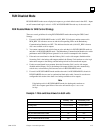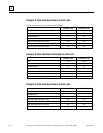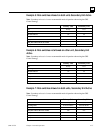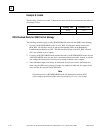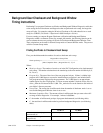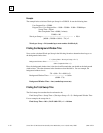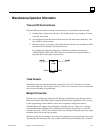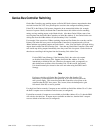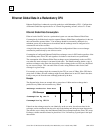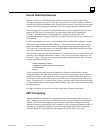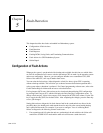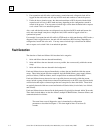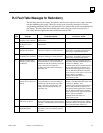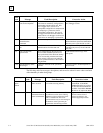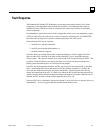
GFK-1527A Chapter 4 Normal Operation 4-23
4
Genius Bus Controller Switching
Genius Bus Controllers stop sending outputs to Genius I/O blocks when no output data has been
received from the PLC CPU for a period equal to two times the configured watchdog timeout.
If the CPU in the Primary Unit becomes inoperative in an uncontrolled fashion (for example,
because of a power failure), the Genius Bus Controllers detect this within twice the watchdog
setting, and stop sending outputs to the Genius blocks. After three Genius I/O bus scans of not
receiving data from the Genius Bus Controllers at Serial Bus Address 31, the Genius blocks start
driving data from Serial Bus Address 30 (the Secondary Unit) if available.
For example, if the system has a 200ms watchdog timeout and 5ms Genius bus scan time, and the
Primary Unit main rack loses power, the Genius Bus Controllers in expansion racks will wait
400ms and then stop updating outputs on Genius blocks. After 15ms, the blocks will begin driving
outputs based on data from the Secondary Unit. Note that any Genius Bus Controllers in the main
rack would stop driving outputs immediately since they would also lose power. Genius blocks on
these busses would begin driving data from the Secondary Unit within 15ms.
Note
For the GHS Control Strategy, if the Secondary Unit is the active unit, outputs
are disabled in the Primary Unit. Outputs from Serial Bus Address 31 are not
immediately available in this case. Therefore, the outputs could go temporarily to
their default state on failure of the Secondary Unit. For this reason, the Primary
Unit should normally be selected as the active unit when using the GHS Control
Strategy.
Note
For fastest switching, all Genius Bus Controllers in the Hot Standby CPU
Redundancy system should be in the main rack, or in a rack driven by the main
rack's power supply. This causes the Genius Bus Controller to lose power at the
same time that the CPU loses power. This, in turn, allows the backup unit to gain
full control of the I/O as soon as possible.
For single bus Genius networks, if outputs are not available on Serial Bus Address 30 or 31, then
the block’s outputs revert to default or hold last state (as configured).
For dual bus networks, if outputs are not available on Serial Bus Address 30 or 31, then the BSM
will switch to the other bus. If outputs are not available on either bus, then the block’s outputs
revert to default or hold last state (as configured).



